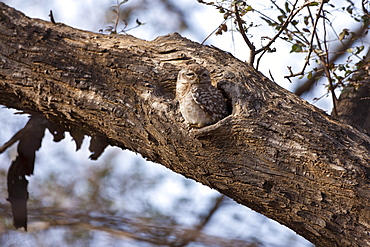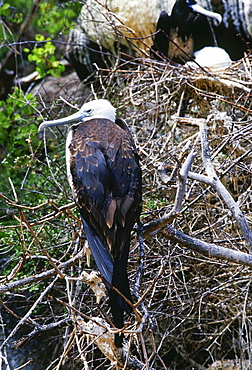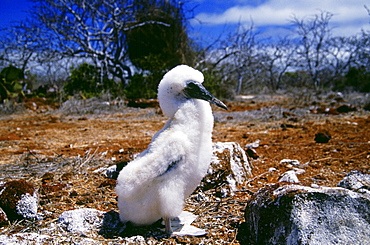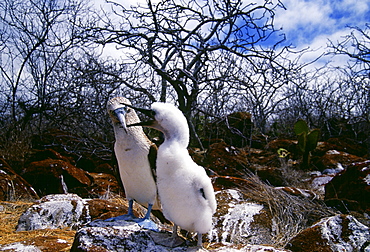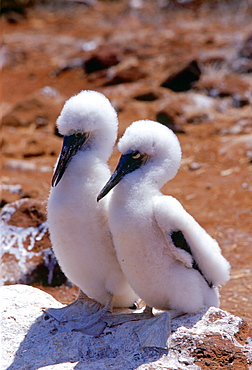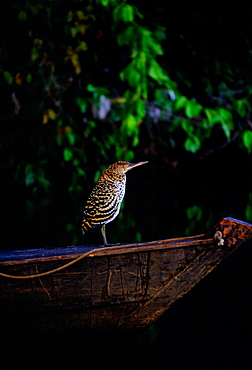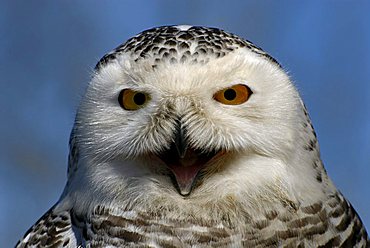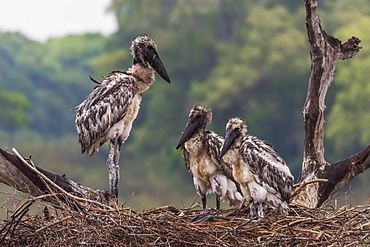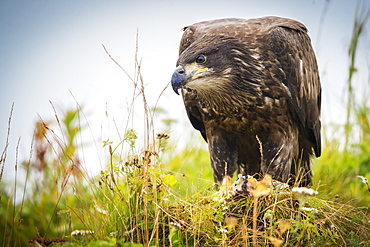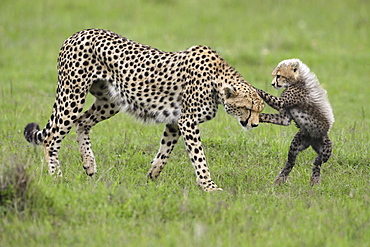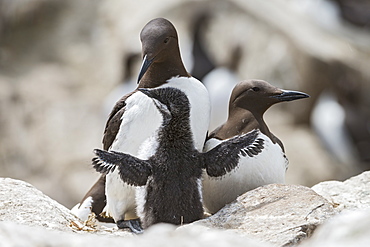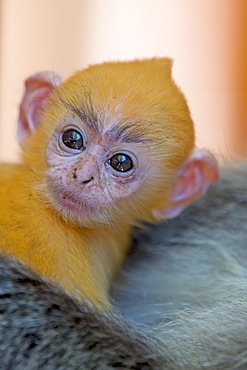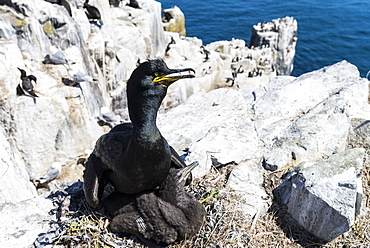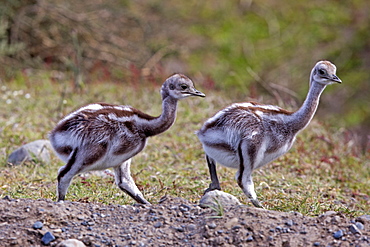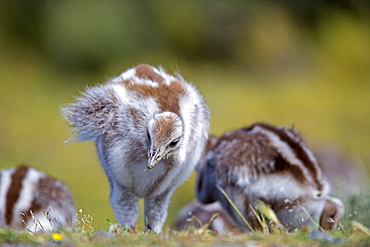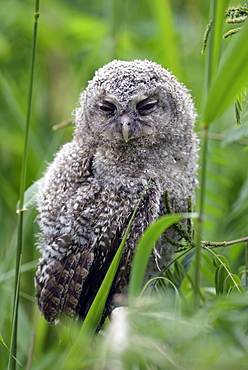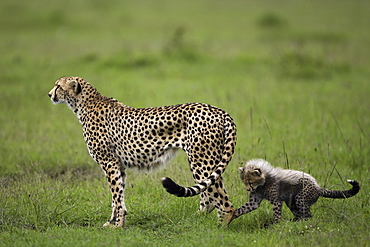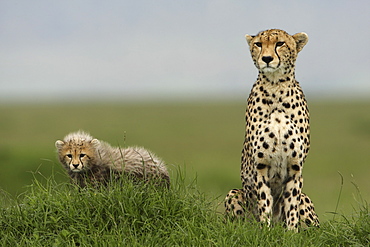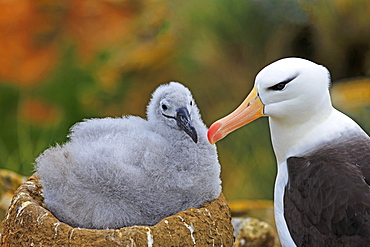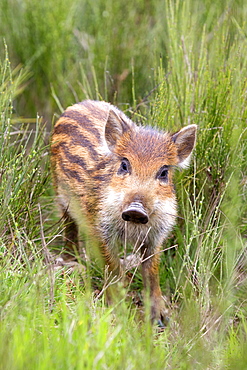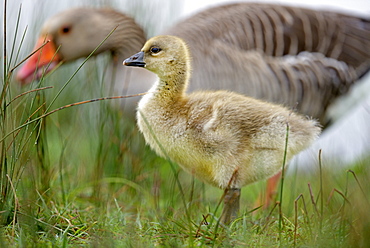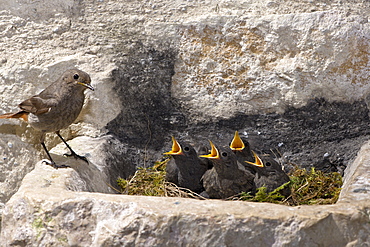Results
18 results found
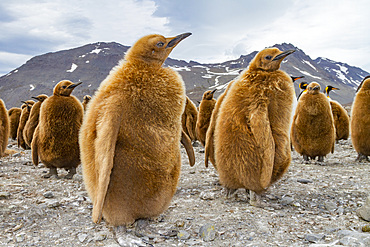
King penguins (Aptenodytes patagonicus) in downy plumage (okum boys) on South Georgia Island, Polar Regions
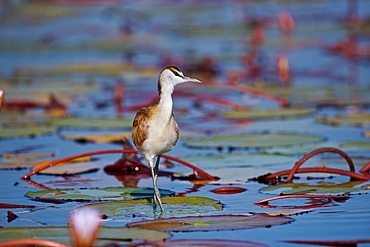
Juvenile African Jacana, (Actophilornis africana), stalking prey in water lilies, Chobe National Park, Botsuana, Africa
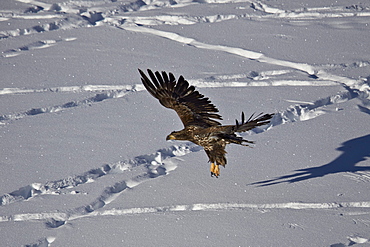
Juvenile golden eagle (Aquila chrysaetos) in flight over snow in the winter, Yellowstone National Park, Wyoming, United States of America, North America

Juvenile Yellow Crowned Night Heron (Nyctanassa Violacea), wading bird found in the Americas that feeds on crustacea, Bermuda, Atlantic
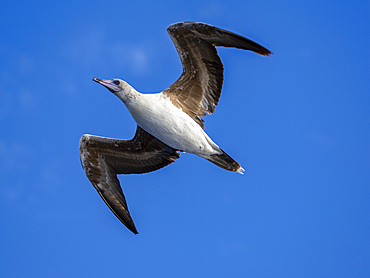
A juvenile red-footed booby (Sula sula), in its white color morph plumage in flight over the ocean in Palau, Micronesia, Pacific

Red-tailed hawk (Buteo jamaicensis) juvenile in a snow-covered tree, Bosque del Apache National Wildlife Refuge, New Mexico, United States of America, North America
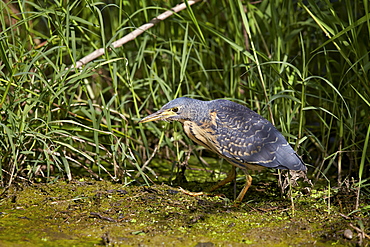
Green-backed heron (striated heron) (Butorides striatus), immature, Ngorongoro Crater, Tanzania, East Africa, Africa
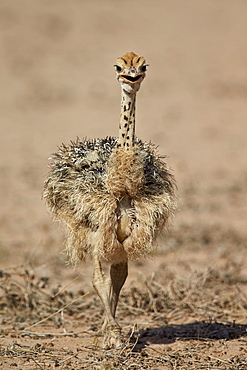
Common ostrich (Struthio camelus) chick, Kgalagadi Transfrontier Park, encompassing the former Kalahari Gemsbok National Park, South Africa, Africa

Hooded vulture (Necrosyrtes monachus) in mixed juvenile and adult plumage with a prize from a wildebeest kill, Ngorongoro Conservation Area, UNESCO World Heritage Site, Serengeti, Tanzania, East Africa, Africa
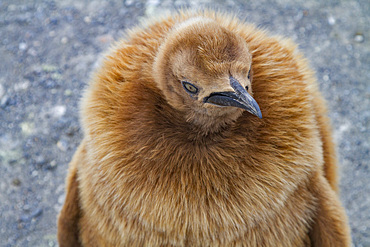
King penguin (Aptenodytes patagonicus) in downy plumage (okum boys) on South Georgia Island, Polar Regions

Juvenile puffin (Fratercula arctica) on the water near the island of Bolscheoya in the Svalbard Archipelago, Norway, Arctic, Europe
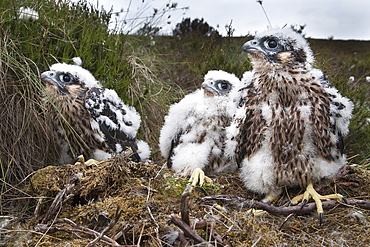
Peregrine chicks (Falco peregrinus), after being ringed, Northumberland National Park, England, United Kingdom, Europe
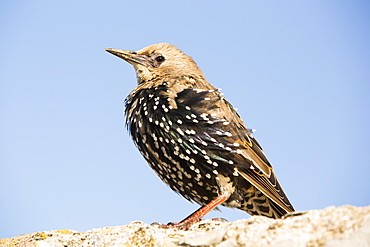
A Common Starling, Sturnus vulgaris in Seahouses, Northumberland, UK, moulting from Juvenile to adult plumage.
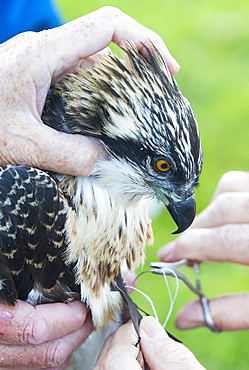
On Friday 11th July 2014, the Young Ospreys that nest on Bassenthwaite in the Lake District National Park, Cumbria, UK, are ringed and fitted with a satelite tracker. they are ringed by Pete Davis, a licensed bird ringer, and the satelite tracker is fitred by Roy Dennis. Roy is theonly person in the UK, licensed to fit satelite trackers to birds of prey. The tracing is part of the Bassenthwaite Osprey project, to see whereabouts in Africa the young migrate to, before returning hopefully to the UK to nest.Ospreys recolonized the Lake district in 2001, after an absence ovf over 150 years. In the last fourteen years of breeding over half a million people have visited the project to view these spectacular fish eating birds.
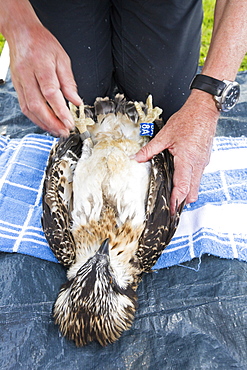
On Friday 11th July 2014, the Young Ospreys that nest on Bassenthwaite in the Lake District National Park, Cumbria, UK, are ringed and fitted with a satelite tracker. they are ringed by Pete Davis, a licensed bird ringer, and the satelite tracker is fitred by Roy Dennis. Roy is theonly person in the UK, licensed to fit satelite trackers to birds of prey. The tracing is part of the Bassenthwaite Osprey project, to see whereabouts in Africa the young migrate to, before returning hopefully to the UK to nest.Ospreys recolonized the Lake district in 2001, after an absence ovf over 150 years. In the last fourteen years of breeding over half a million people have visited the project to view these spectacular fish eating birds.
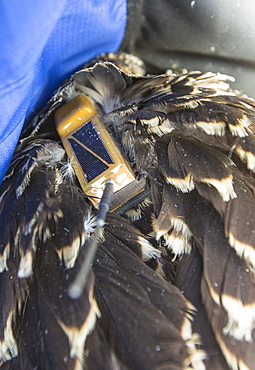
On Friday 11th July 2014, the Young Ospreys that nest on Bassenthwaite in the Lake District National Park, Cumbria, UK, are ringed and fitted with a satelite tracker. they are ringed by Pete Davis, a licensed bird ringer, and the satelite tracker is fitred by Roy Dennis. Roy is theonly person in the UK, licensed to fit satelite trackers to birds of prey. The tracing is part of the Bassenthwaite Osprey project, to see whereabouts in Africa the young migrate to, before returning hopefully to the UK to nest.Ospreys recolonized the Lake district in 2001, after an absence ovf over 150 years. In the last fourteen years of breeding over half a million people have visited the project to view these spectacular fish eating birds.

On Friday 11th July 2014, the Young Ospreys that nest on Bassenthwaite in the Lake District National Park, Cumbria, UK, are ringed and fitted with a satelite tracker. they are ringed by Pete Davis, a licensed bird ringer, and the satelite tracker is fitred by Roy Dennis. Roy is theonly person in the UK, licensed to fit satelite trackers to birds of prey. The tracing is part of the Bassenthwaite Osprey project, to see whereabouts in Africa the young migrate to, before returning hopefully to the UK to nest.Ospreys recolonized the Lake district in 2001, after an absence ovf over 150 years. In the last fourteen years of breeding over half a million people have visited the project to view these spectacular fish eating birds.
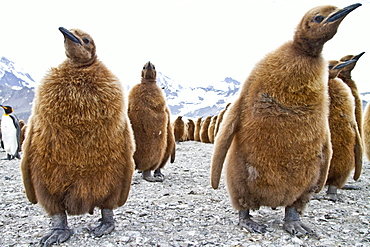
King penguins (Aptenodytes patagonicus) in downy plumage (often called "okum boys") on South Georgia Island, Southern Ocean.
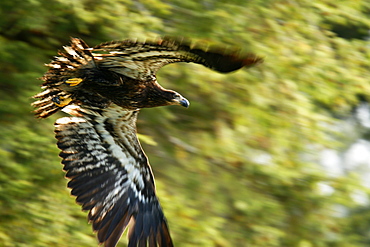
Juvenile bald eagle (Haliaeetus leucocephalus) in flight in Takatz Bay on Baranof Island, Southeast Alaska, USA
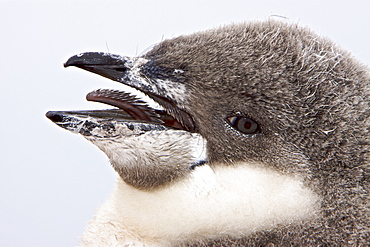
Chinstrap penguin (Pygoscelis antarctica) chick head detail at colony on Useful Island near the Antarctic Peninsula. There are an estimated 2 million breeding pairs of chinstrap penguins in the Antarctic peninsula region alone, perhaps as many as 7.5 million breeding pairs in all of Antarctica. Their name derives from the narrow black band under their heads which makes it appear as if they are wearing black helmets, making them one of the most easily identified types of penguin. Other names for them are "Ringed Penguins", "Bearded Penguins", and "Stonecracker Penguins" due to their harsh call. They grow to 68 cm (27 in). The average adult weight of a Chinstrap Penguin is 4.5 kg (10 lbs). Weight can range from 3 to 6 kg (6.6-13.2 lbs), with males being slightly larger and weight varying based on where the penguin is in the breeding cycle. Their diet consists of krill, shrimp, and fish. On land they build circular nests from stones, and lay two eggs, which are incubated by both the male and the female for shifts of five to ten days. They can also breed on icebergs, though they prefer non-icy conditions. The chicks hatch after about 35 days, and have fluffy gray backs and white fronts. The chicks stay in the nest for 20?30 days before they go to join a creche. At around 50?60 days old, they moult, gaining their adult plumage and go to sea. The Chinstrap Penguin was first described by German naturalist Forster in 1781. Its specific epithet was often seen as antarctica, however a 2002 review determined the genus Pygoscelis was masculine, and hence the correct binomial name is Pygoscelis antarcticus.
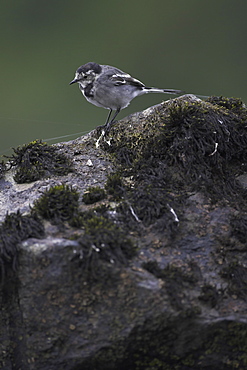
Pied Wagtail (Motacilla alba ssp yarellii) looking for food on a rock in the water. Pied Wagtails will scurry along the rocks on the banks of Loch Awe searching for insects. Argyll, Scotland

Grey Wagtail (Motacilla cinerea) with some juvenille plumage walking through water. Wagtails search for food along the shores of the loch in amongst the rocks, sometimes pausing to asses the situation.. Argyll, Scotland
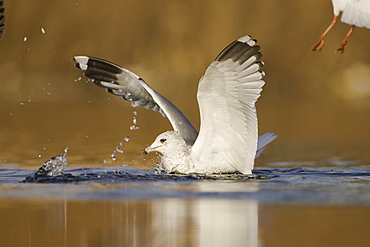
Herring Gull (Larus argentatus) juvenile taking off from pond with winter plumage . Maryhill Canal, Strathclyde, Scotland, UK
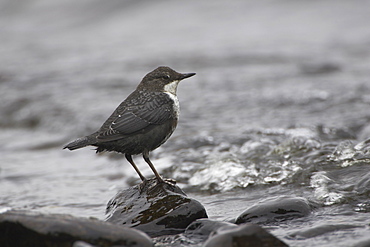
Juvenile Dipper (Cinclus cinclus) on rocks feeding in the waves of Loch Awe. Dippers feed on insects underneath rocks in the water and even on stormy days like this one can feed right amongst the waves. Juvenile Dippers have more dappled feathers than Adults. . Argyll, Scotland
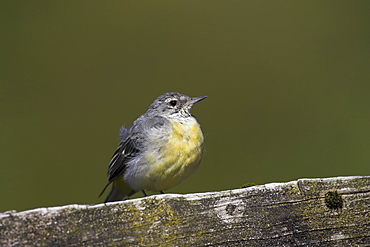
Grey Wagtail (Motacilla cinerea) with some juvenille plumage sitting on submerged fence post. Wagtails like perches over the water to preen and rest.. Argyll, Scotland

Eider duck (Somateria mollissima), male and juvenile swimming past a fish farm, tend to raft there in the winter.

Black Headed Gull (Larus ridibundas) and Herring Gull (Larus argentatus) juvenile taking off from pond with winter plumage . Maryhill Canal, Strathclyde, Scotland, UK
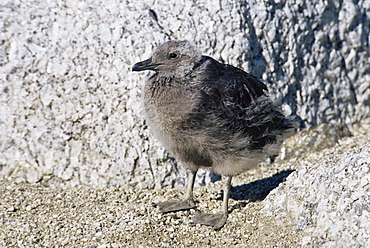
South polar skua (Catharacta maccormicki) chick about to fledge, will have much lighter plumage cf to Brown skua, Ross Sea, Antarctica, Southern Ocean
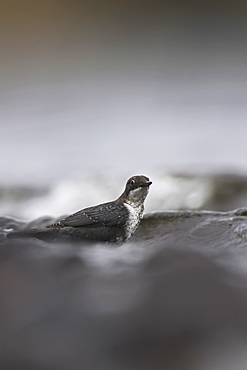
Juvenile Dipper (Cinclus cinclus) on rocks feeding in the waves of Loch Awe. Dippers feed on insects underneath rocks in the water and even on stormy days like this one can feed right amongst the waves. Juvenile Dippers have more dappled feathers than Adults. . Argyll, Scotland
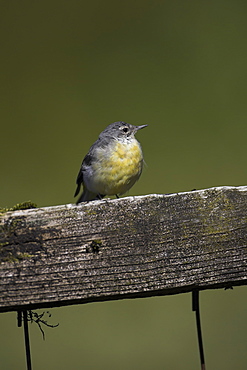
Grey Wagtail (Motacilla cinerea) with some juvenille plumage sitting on submerged fence post. Wagtails like perches over the water to preen and rest.. Argyll, Scotland
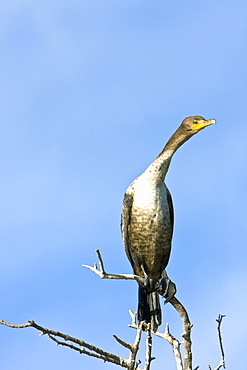
Juvenile double-crested cormorant (Phalacrocorax auritus) in Magdalena Bay between Isla Magdalena and the Baja Peninsula, Baja California Sur, Mexico. Note the light chest and neck in juveniles.

Juvenile bald eagle (Haliaeetus leucocephalus) in flight in Takatz Bay on Baranof Island, Southeast Alaska, USA
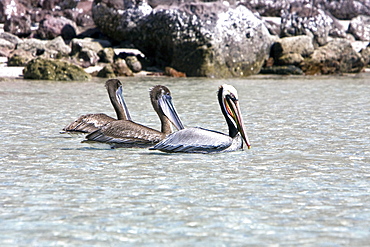
Two juvenile brown pelicans (Pelecanus occidentalis) behind an adult in the lower Gulf of California (Sea of Cortez), Mexico. Note the uniform drab brown coloration of the juvenile plumage.
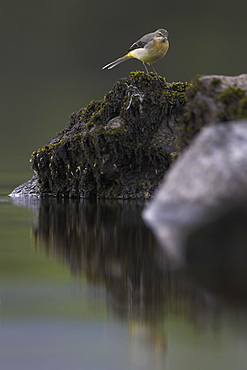
Grey Wagtail (Motacilla cinerea) with some juvenille plumage amongst rocks. Wagtails search for food along the shores of the loch in amongst the rocks, sometimes pausing to asses the situation.. Argyll, Scotland
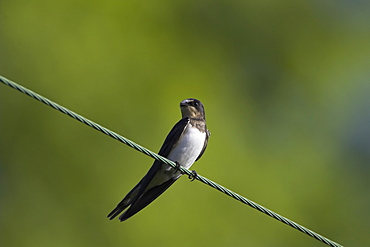
Juvenille Swallow (Hirundo rustica) preening on power lines and cables. Swallows often perch on power lines and telephone cables, calling, resting and preening.. Argyll, Scotland

King penguins (Aptenodytes patagonicus) in downy plumage (often called "okum boys") on South Georgia Island, Southern Ocean.
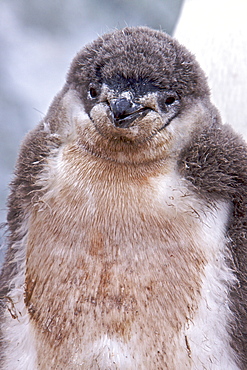
Guano-covered chinstrap penguin (Pygoscelis antarctica) chick at breeding colony on Useful Island near the Antarctic Peninsula

Chinstrap penguin (Pygoscelis antarctica) parent and chick at breeding colony on Useful Island near the Antarctic Peninsula
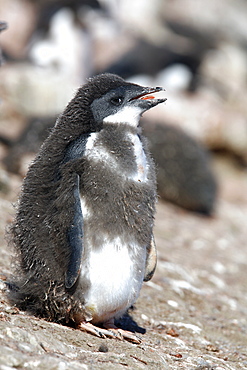
Adelie penguin (Pygoscelis adeliae) chick molting its downy feathers with adult plumage beneath on Devil Island near the Antarctic Peninsula.
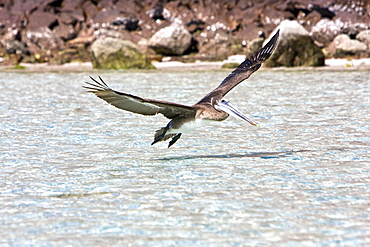
Juvenile brown pelican (Pelecanus occidentalis) in the lower Gulf of California (Sea of Cortez), Mexico. Note the uniform drab brown coloration of the juvenile plumage.
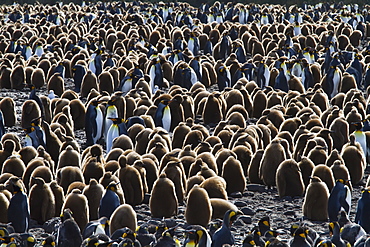
King penguins (Aptenodytes patagonicus) in downy plumage (often called "okum boys") on South Georgia Island, Southern Ocean.
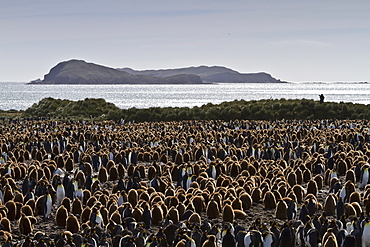
King penguins (Aptenodytes patagonicus) in downy plumage (often called "okum boys") on South Georgia Island, Southern Ocean.
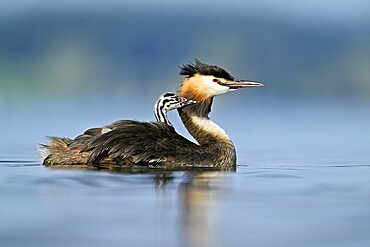
Great Crested Grebe (Podiceps Scalloped ribbonfish), with chicks in plumage swimming in the water, Lake Zug, Canton Zug, Switzerland
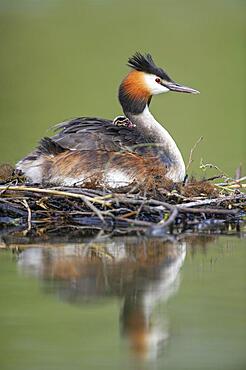
Great crested grebe (Podiceps cristatus) at the nest with young bird in plumage, Oldenburger Muensterland, Vechta, Lower Saxony, Germany, Europe

King penguin (Aptenodytes patagonicus) with chicks, breeding colony, Volunteer Point, Falkland Islands, South America
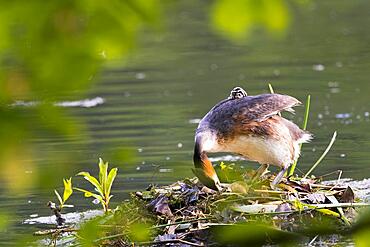
Great crested grebe (Podiceps cristatus) on nest with young bird in plumage, turning eggs, Hesse, Germany, Europe
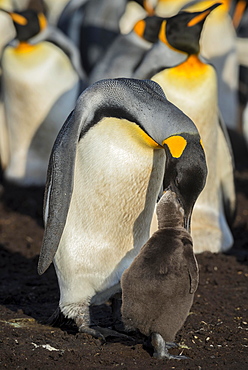
King penguin (Aptenodytes patagonicus) feeds chicks, breeding colony, Volunteer Point, Falkland Islands, South America
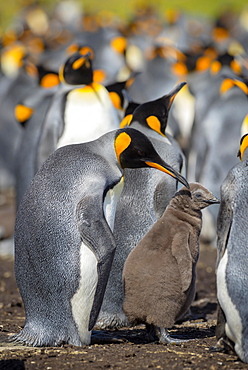
King penguin (Aptenodytes patagonicus) with chicks, breeding colony, Volunteer Point, Falkland Islands, South America

King penguin (Aptenodytes patagonicus) with chicks, breeding colony, Volunteer Point, Falkland Islands, South America
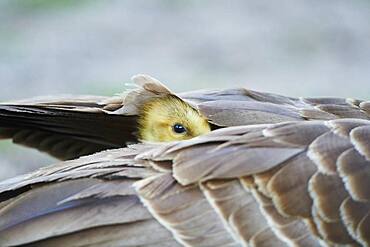
Canada goose (Branta canadensis) chick under the feathers of its mother, Frankonia, Bavaria, Germany, Europe
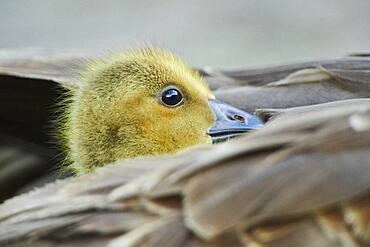
Canada goose (Branta canadensis) chick under the feathers of its mother, Frankonia, Bavaria, Germany, Europe
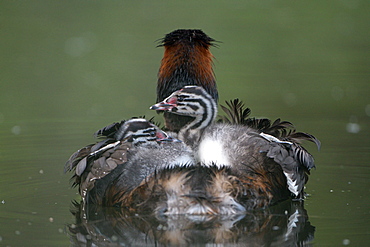
Great crested grebe (Podiceps cristatus), adult bird with chicks, Krickenbecker Seen, Nettetal, North Rhine-Westphalia, Germany, Europe
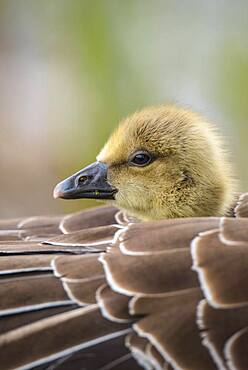
Gosling of a Greylag goose ( anser anser) in back plumage, chick, cute, protection, sheltered, Hannover, Lower Saxony, Germany, Europe
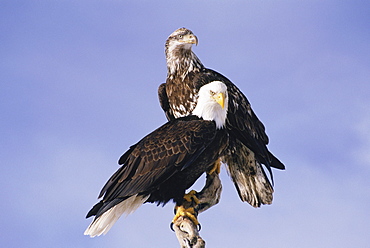
Mature and immature of American bald eagles (Haliaeetus leucocephalus) stand side-by-side on a tree branch to show the difference between juvenile and adult plumage.
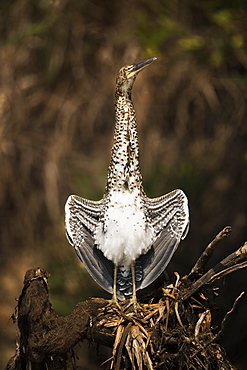
Juvenile Rufescent Tiger Heron (Tigrisoma Lineatum) Stretching It's Wings, Mato Grosso Do Sul, Brazil
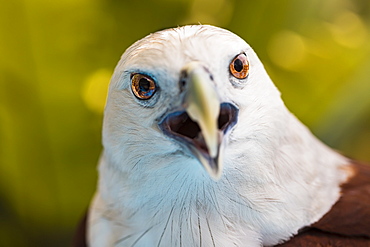
The Brahminy Kite (Haliastur indus), also known as a red backed sea eagle, are scavengers rather than hunters. They feed on carrion, insects, reptiles, amphibians, crustaceans and fish, Philippines
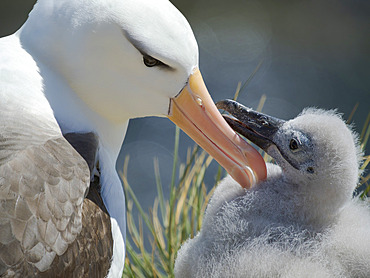
Black-browed Albatross or Mollymauk (Thalassarche melanophris) feeding a chick. South America, Falkland Islands, Saunders Island, summer
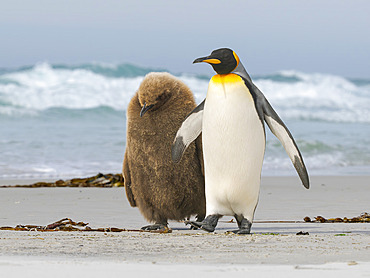
King Penguin (Aptenodytes patagonicus) chick follows adult in the Falkland Islands in the South Atlantic. South America, Falkland Islands, Saunders Island
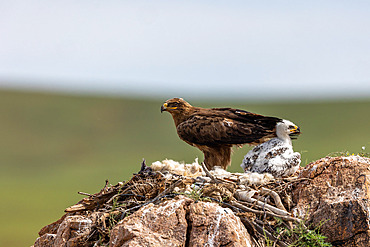
Steppe Eagle;Aquila nipalensis), nesting with 2 chicks,;only one visible), Steppe, Eastern Mongolia, Mongolia, Asia
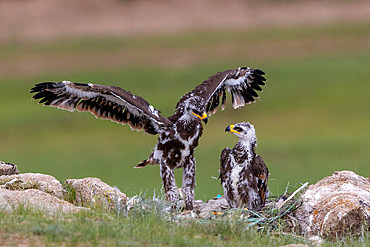
Steppe Eagle;Aquila nipalensis), nest on the ground with 2 chicks, Steppe, Eastern Mongolia, Mongolia, Asia
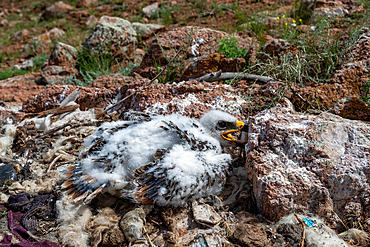
Steppe Eagle;Aquila nipalensis), nest on the ground with 2 chicks, Steppe, Eastern Mongolia, Mongolia, Asia
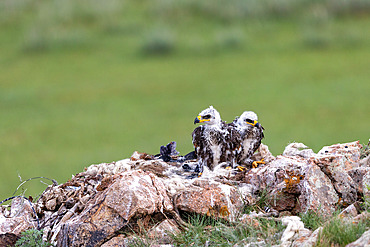
Steppe Eagle;Aquila nipalensis), nest on the ground with 2 chicks, Steppe, Eastern Mongolia, Mongolia, Asia
